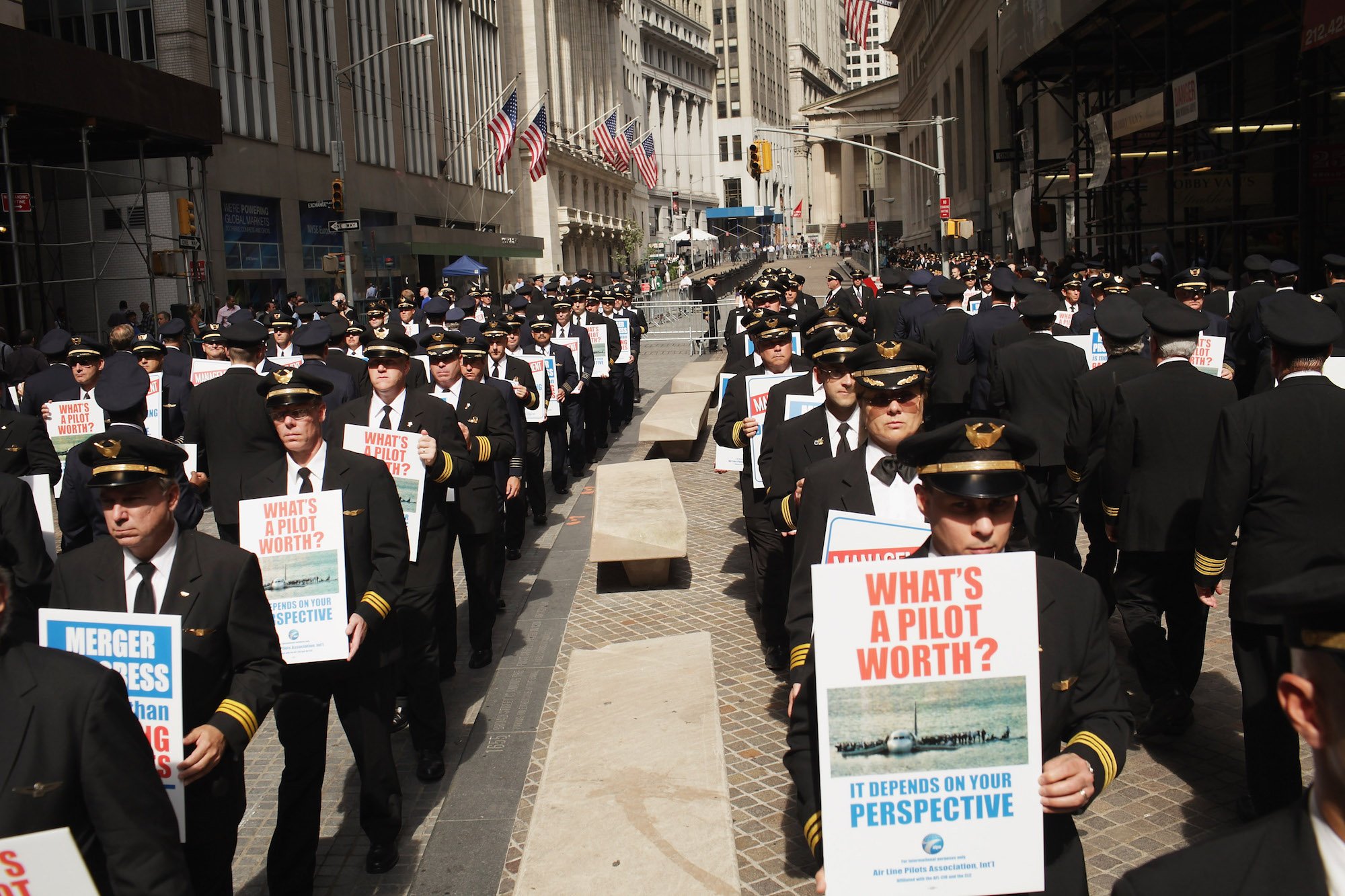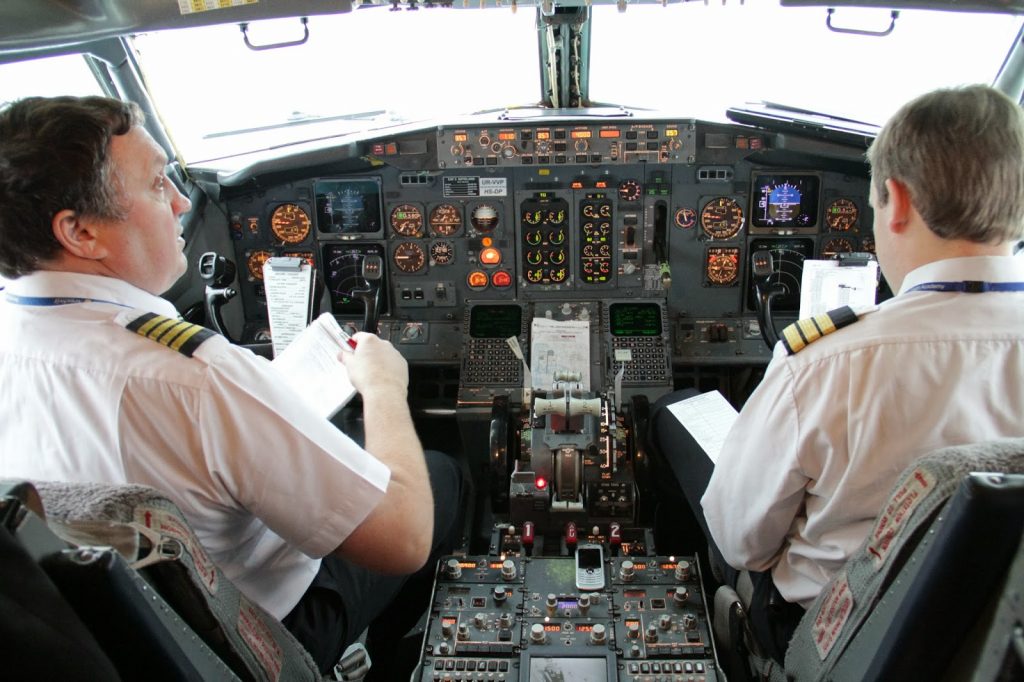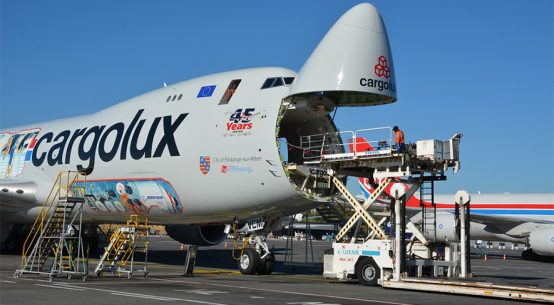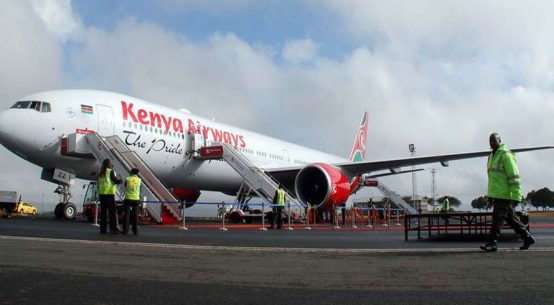
Working in aviation has lost its glamor. It happened because the law gave carriers every advantage over their workforces—and because we demanded lower airfare.
— here’s how working for an airline lost its glamor

Nobody wants to be a pilot anymore. As the airlines tell it, a so-called pilot shortage has made it impossible to staff their fleets, forcing them to cancel flights and park hundreds of airworthy planes in the desert.
One airline ventured to blame its 2016 bankruptcy on its inability to hire enough pilots, and even at always-profitable and carefree Southwest Airlines, the challenge of recruiting millennial aviators keeps middle management awake at night. “The biggest problem,” a Southwest executive told Bloomberg, “is a general lack of interest in folks pursuing this as a career anymore.”
Airline execs tend to make the shortage seem more mysterious than it is, as if something in the contrails is fueling this “general lack of interest” in the profession. That’s evasive. Rather, the shortage is best understood as an obvious manifestation—and perhaps the nadir—of a long-term deprofessionalization of what was once a solidly middle-class career: We made the pilot occupation so unattractive, so tenuous and poorly paid, that people stopped wanting to do it.
Flying, meanwhile, has also become unbearable for passengers. The airlines that survived the volatile decade following 9/11 have since consolidated themselves into a lucrative oligopoly, prompting questions about why smaller cities continue to lose service, why seats keep getting smaller, why fares have remained stubbornly high even as fuel prices dropped and profits soared, and why paying passengers are being quasi-defenestrated from overbooked flights.
The degenerating passenger and pilot experiences aren’t separate phenomena but in fact are intimately related, both resulting from policy choices that have propelled a decadeslong, ongoing makeover of the national air-transit system. The difference, perhaps, is that we are more conscious that we, the passengers, are getting a raw deal.
So are aviation workers, but there is more to the pilot shortage than just pay. Industry representatives are pushing Congress to address the rising cost of pilot training, which can exceed $100,000 after requirements became more stringent in response to a 2009 crash. Competition for pilots has also gone global, causing many young pilots to leave the US to chase more exotic opportunities with Emirates and other Middle Eastern carriers. And there are class-conscious obstacles to recruitment—flying has become less glamorous.
But at the regional airlines where the effects of the pilot shortage are most acute, even management seems to have finally acknowledged that pay matters, as evidenced by their recent efforts to raise starting salaries that paid first-year pilots as little as $15,000 to $20,000. And although many jobs have gotten worse in the past few decades, pilot wage stagnation distinguishes itself in several respects.
The degenerating passenger and pilot experiences are not separate phenomena but in fact are intimately related.
First, airline jobs appear to be caught in a steeper free fall. Before President Carter and a Democratic Congress deregulated the airlines in 1978, few industries paid higher wages. In the 1990s, a number of studies reviewed deregulation’s impact on airline wages, attributing decreases in the range of 10 to 20 percent for pilots, and more for flight attendants. While many observers hypothesized that wages would stabilize as the shakeout from deregulation attenuated, wages never managed to find a floor in the decade after 9/11. According to a Government Accountability Office analysis, pilots’ median weekly earnings fell another 9.5 percent from 2000 through 2012—lower wage growth than 74 percent of the other professions included in the GAO’s review.
Nor has this wage erosion been limited to pilots. Today, many flight attendants begin their careers making less than minimum wage—as I did as a flight attendant for Pinnacle Airlines, where I was employed from 2011 to 2013. It’s even worse for those who work outside the aircraft.
Average weekly wages for airport operations workers, a category that includes baggage handlers and other support staff, fell by 14 percent from 1991 to 2011—a growth rate that was lower even than the low-wage retail and food service industries, according to a 2013 study. Airline workers also work much harder than they did in the past; the industry had the second highest multifactor productivity growth from 1997 through 2014, according to an analysis by the Bureau of Labor Statistics.
Declining wages and inequality are sometimes described as an inevitable, deterministic outcome of abstract economic forces, but none of the usual suspects seem to adequately explain what’s happening to airline jobs in the US—not immigration (pilots and flight attendants must speak English), globalization (so-called cabotage laws have limited the scope of international outsourcing), automation (robots haven’t yet displaced pilots), or the decline of unions (union density remains high). How, then, could the airline industry have fared worse than most other industries?

In the recent history of pilot wages, two related trends have tipped the balance of power between the airlines and their labor force: the proliferation of outsourcing strategies after 9/11 and the consolidation of the country’s major air carriers.
Regional airlines are having the hardest time hiring pilots. These companies, where most pilots now begin their careers, operate almost half of all domestic flights on behalf of major carriers like Delta, United, and American.
David Dao was actually kicked off a United flight that was operated by Republic Airways. Though the employees on the plane wore United uniforms, their paycheck came from Republic.
The regional industry grew as a strategic response to the downturn after the Sept. 11 terrorism attacks. The airlines’ losses were unprecedented. Through 2005, the airlines lost more than $50 billion and received more than $5 billion in direct government aid. Four major carriers went bankrupt, and the industry shed more than 100,000 jobs, around 15 percent of its entire workforce.
If the unions refused to renegotiate their contracts, the airlines threatened to declare bankruptcy.
The 50-seat regional jet played a key role in the industry’s recovery. Until about 1998, smaller airports were served either by larger jets, which were oversized for these markets, or turboprops, which flew slow and not as far. As the airlines attempted to stave off bankruptcy, they began buying a repurposed corporate jet manufactured by Bombardier, the CRJ200.
The plane allowed the airlines to better match their smaller markets with demand, which in turn allowed them to redeploy larger planes to more lucrative international routes. The jets could also reach markets that were beyond the reach of the turboprops, allowing airport hubs to expand their customer base.
At first these planes were operated in house or through wholly owned subsidiaries, but after a time the flying was outsourced to independent companies. That strategy was initially constrained by the pilot unions, because collective-bargaining agreements typically limited how much flying could be outsourced.
A standard response emerged: If the unions refused to renegotiate their contracts, the airlines threatened to declare bankruptcy, where they might be judicially absolved from the commitments they had promised to workers. Forced to make concessions, the unions allowed more outsourcing to avoid options that would hurt their current members more, like additional layoffs or pay cuts.
Because of these dynamics, every major airline had secured permission to fly more regional jets by the mid-2000s. As a result, regional jet capacity grew by 97 percent between 2000 and 2003, suddenly making these planes an integral part of the system.
Regional airline pilots and flight attendants have always made less than their mainline counterparts, but before 2000, the regional airline workforce was much smaller. In 1978, regional aircraft flew approximately 5 percent of all domestic departures; in 2000, 16 percent; in 2015, 45 percent.
Through outsourcing, the major carriers effectively introduced a permanent secondary scale. The result is that today’s young pilots are embarking on careers that look markedly different from the ones their senior colleagues began a generation ago. Though it’s still possible to make $200,000 flying international routes at a top airline, new pilots must now progress through a regional pay scale before they begin their ascent of a major’s scale, meaning it will take them longer to get to top pay, and their lifetime earnings will ultimately be lower. This helps explain why more than $100,000 in income now separates the top-earning 10 percent of pilots from the lowest-earning decile, a wage differential matched by few occupations.
Toward the latter half of the 2000s, consolidation played an equally important role in forcing down the pay of entry-level pilots. Though Congress intended for the Airline Deregulation Act of 1978 to promote competition, the four largest airlines now find themselves in control of 80 percent of the market. When the reform passed, five airlines controlled 70 percent of the market. This has helped awaken political interest in consumer rights, but less attention has been paid to how airlines could wield market power to depress wages.
In the mid-aughts, regionals often earned substantial profits, but as the majors struggled through bankruptcies and the 2008 recession, they sought to renegotiate the amount they were paying to the regional carriers, ultimately securing new agreements on much less generous terms.
Regional airlines had undesirable planes and fewer customers for their flying. They had little recourse.
Several concurrent trends also caused the airlines to re-evaluate their reliance on 50-seat regional jets. Most significantly, jet fuel prices rose almost 500 percent between 2002 and 2008. When Bombardier released a larger, 76-seat version of the CRJ200 that had far superior fuel economy, there were suddenly powerful incentives for the airlines to find ways to get rid of their 50-seaters.
Market power made it easier for the airlines to achieve this goal. After the mergers between Delta and Northwest in 2008, United and Continental in 2010, and American and US Airways in 2013, each combined carrier found itself in control of a large fleet of undesirable 50-seat jets. The regionals, on the other hand, had fewer customers to whom they could sell their flying. The majors used their leverage, which resembles what economists call “monopsony power,” to continually bid down the price they paid to regionals.
Delta took an especially aggressive tack, suing three of its regional partners for what it alleged were performance issues, in each case withholding millions of dollars in payments it would have ordinarily owed. This helped force Mesa Airlines into bankruptcy, and all three carriers eventually consented to reworking their agreements with Delta. In the new agreements, Delta sought to pay less for its flying and to retire 50-seat aircraft.
Even as they continued to put downward pressure on regional airline wages, Delta and the other majors began to earn record profits. Under such conditions in an ordinary market, economists would have expected the majors to face pressure to raise wages (the majors have raised the pay of direct employees, to Wall Street’s occasional chagrin), but outsourcing and market power have positioned the companies to exclude certain workers from their gains.
Certainly, a case can be made that the government should have more closely scrutinized some of the mergers of the past decade. But current antitrust law prioritizes a consumer focus. Prior to deregulation, merger review would have concerned itself with employee welfare, but as currently practiced, questions about monopsony—when there is only one buyer, in this case of labor—still might have escaped the attention of a more vigilant merger review.
In the “hipster antitrust” corner of Twitter, some are arguing for a more expansive form of trust-busting, one that could mitigate the effects corporate concentration appears to be having on wages in certain parts of the economy, and as appears to be happening in the airline industry. It’s a policy solution that deserves more consideration, but for reasons made clear to me by my own experience as a flight attendant, one that might not be enough to arrest the fall of airline wages.
The airline industry has no formal minimum wage because the Fair Labor Standards Act exempts transportation workers. Because of that, unions are it—the de facto wage floor. The problem is that America’s uniquely permissive bankruptcy laws have undermined the strength of unions.
When I interviewed for my flight attendant position at Pinnacle Airlines in 2010, the hiring manager slid a piece of paper across the table and told me, as if issuing challenge, “That’s how much you’ll make in your first year”—a fairly cinematic way of telling someone their salary is $15,500, though at least she was candid. It compelled me to justify myself, to explain to my interrogators how I planned to live in New York City on so little—less than minimum wage after accounting for the cost of my uniform and unpaid training time.
After I convinced them, I was soon working with pilots who were making about $20,000. Some of them had worked for one or even two failed regional airlines before landing at Pinnacle, where they’d once again found themselves at the bottom of the pay scale.
Most other countries’ bankruptcy courts do not work this way. Canada does not let bankrupt companies tear up labor contracts.
Nonetheless, when Pinnacle went bankrupt in 2012, a victim of what my CEO termed “a race to the bottom” among the regional carriers, labor became the focus of attention, just as it does in all airline bankruptcies. A judge agreed that the company’s pilots were paid “substantially over market,” granting approval of a reorganization plan that included a 9 percent reduction in pilot pay, plus smaller cuts to flight attendant pay and employee benefits.
As an academic matter, bankruptcy law strives to treat all creditors as equals. But in its actual practice, the law has evolved to allow certain creditors to skip to the front of the line. When that allows one party to successfully evade its fair share of the losses, other parties, including labor, stand to lose more.
Plane financiers, in particular, enjoy special treatment through Section 1110 of the bankruptcy law, a provision that essentially bankruptcy-proofs an airplane, allowing lenders to reclaim an asset that might otherwise be sold in order to pay off other creditors. This protection is unique to the perennially insolvent airline industry and helps explain why the financial industry remains willing to lend it money.
This is a notable intervention into a supposedly “deregulated” industry, and without it the airline industry might require more direct forms of public subsidy. In the case of the regional airline industry, 1110 made it much easier for airlines to make consequence-free escapes from their leases after rising fuel costs made their 50-seat jets less economical.
Labor, conversely, cannot cut the creditor line, and the courts can discharge collective bargaining contracts and employee pensions just like any contractual obligation that isn’t an aircraft. The Supreme Court’s Bildisco decision required the airlines jump through some additional hoops before a judge can allow them to rip up a union contract, but the mere fact of its possibility weakens the bargaining power of unions by making companies less accountable to what they’ve promised workers.
Accordingly, the rejection of labor contracts “has not been the mechanism of last resort to save a failing business,” the Air Line Pilots Association told Congress in 2010, “but instead has often been used by employers as a business model to gain long-term economic advantage by unfairly gutting the wages and working conditions of airline and other employees.”
Most other countries’ bankruptcy courts do not work this way. Canada does not let bankrupt companies tear up labor contracts. Some countries jail the executives of bankrupt companies while the boards of insolvent American operators often award “retention bonuses” to their executives. US laws don’t even require bankrupt companies to prove they’re bankrupt, allowing a number of US airlines to enter the process with healthy stores of cash. Of late, as the US airlines have sought to prevent Middle Eastern carriers from securing permissions to serve more US airports, they have pointed out various subsidies these airlines receive from their governments. In response, the Middle Eastern carriers have inventoried the ways in which Chapter 11 shelters US airlines from the free market.
Culled from Slate








